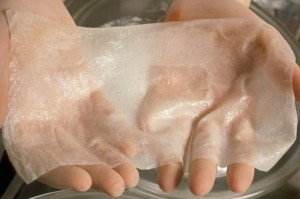3rd Degree Burns
3rd degree burns are burns in which all layers of the skin tissue have been affected. The epidermis (top layer) is scorched, the Dermis (middle layer) is burned and the Subcutaneous layer(deepest layer) is affected. These deep, painful burns have many causes including:, dry heat (fire), liquid burns, chemical burns, radiation, friction; and most commonly, thermal heat (touching hot objects). Receiving any type of 3rd degree burns will cause the skin to become hot, red and blistery. The skin near the affected area may also start to peel off or appear charred. Medical attention is required for any type of 3rd degree burn.
Basic Treatment
Treatment of 3rd degree burns differs depending on the severity of the burn. The severity is determined by a general triage by a physician, the more surface area is damaged, the more severe the burn is. The first step after determining the severity of the wound is a general cleaning of the infected area. Dead tissue must be removed from the would to provide an optimal environment for repair and to avoid infection. Dead tissue removal may be done by a special bath in the emergency room or through a surgical procedure. During this process, IV Fluids will be given to the burn victim to replenish their electrolytes and counteract the fluid loss occurring as result of the 3rd degree burns. Physicians will also give main medications to the patient; whereas, the cleaning process can be just as painful if not more painful than the burn itself. Antibiotics may be given as well if the doctor feels there is a possibility of infection or signs of infection are already appearing. More extensive treatment plans such as skin grafting and reconstruction may be needed if the burn is severe enough.
The Art of Healing: Skin Grafting
Skin grafting is a technique that helps protect the 3rd degree burns from infection and benefits the appearance of the wound. Skin grafting is a surgical procedure in which a thin layer of skin is scraped off a “donor site” which is a patch of skin that is unaffected by the burn. That layer of skin is then placed over the 3rd degree burns (graft site) to help them heal. Surgeons use a tool called a Power Dermatome to scrape off a specific amount of skin from the donor site. The amount of skin taken from the donor site depends on the depth and severity of the burn.
If there is not enough healthy skin for a skin graft, all hope is not lost. Researchers have mastered the art of growing skin to use in place of a donor site. Physicians take a few healthy skin cells from the patient and grow a thin layer of skin in a lab. These sheets of skin are then placed over the wounds to help them heal and stay clean. Over the years this procedure has been used on thousands of burn victims and has shown effective in numerous patients. Skin grafting not only helps the function of the graft site but also the cosmetic appeal. Researchers and physicians have worked together to create a treatment to facilitate the healing of 3rd degree burns that leads to a happier life for their patients.
For minor burn treatment visit Care Club.



